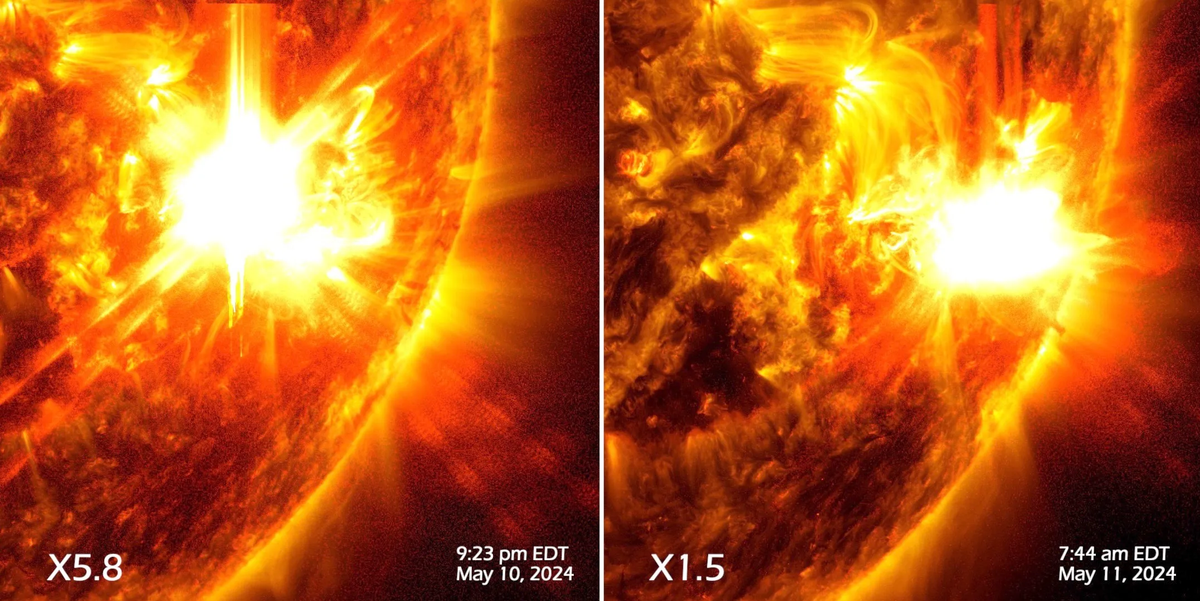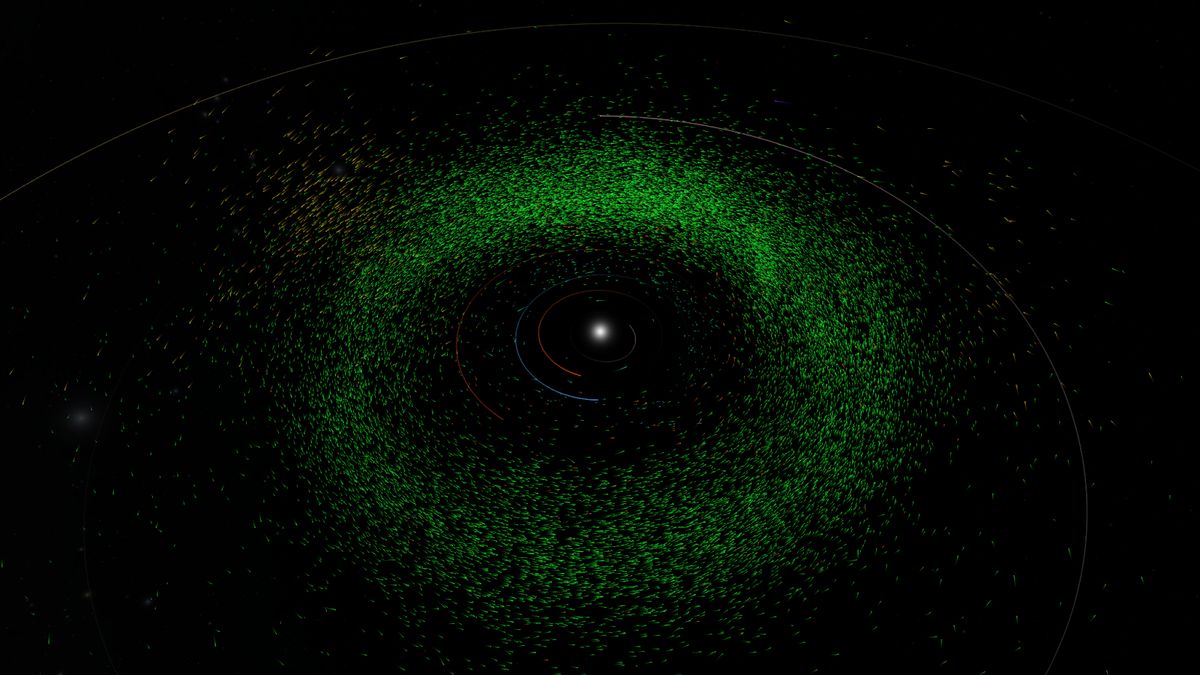The Sun’s Explosive Activity
Recent solar activity has reached new levels of intensity as the sun unleashed its most powerful flare of the weekend. The eruption originated from an active sunspot region known as AR3664 and peaked at 9:23 p.m. EDT on May 10, registering as an enormous X5.8 class flare according to the Space Weather Prediction Center (SWPC) of the National Oceanic and Atmospheric Administration (NOAA).
Following this significant event, a radio blackout occurred in certain areas of the Earth’s sunlit side due to the effects of the solar flare. Despite this, the sun continued to exhibit high levels of activity with another powerful X1.5 solar flare discharged at 7:44 a.m. EDT on May 11, as reported by NASA officials.
Solar Flares: Impacts and Significance
X-class flares such as these are among the most potent solar eruptions, with the capacity to disrupt various terrestrial systems. NASA emphasized the potential impacts of flares and solar eruptions, which can influence radio communications, electric power grids, navigation signals, spacecraft, and even astronauts aboard these vessels.
The recent NOAA SWPC forecast discussion indicated that the active region AR3664 is projected to remain active through May 13, with the likelihood of more flares in the M and X classes. This massive sunspot complex, approximately 17 times the width of Earth, continues to be closely monitored by NOAA SWPC experts.
Furthermore, scientists observed a coronal mass ejection (CME) accompanying the main solar flare, which is currently under analysis and modeling. The potential effects of this event on Earth include issues with power grids, telecommunication networks, satellite operations, and possibly enhanced auroral displays in specific regions.
Conclusion
In conclusion, the recent series of powerful solar flares herald an active phase of solar activity that has captured the attention of space weather experts. As research and monitoring efforts continue, the potential impacts on Earth’s technological infrastructure and natural phenomena remain a subject of interest and concern.
Image/Photo credit: source url





